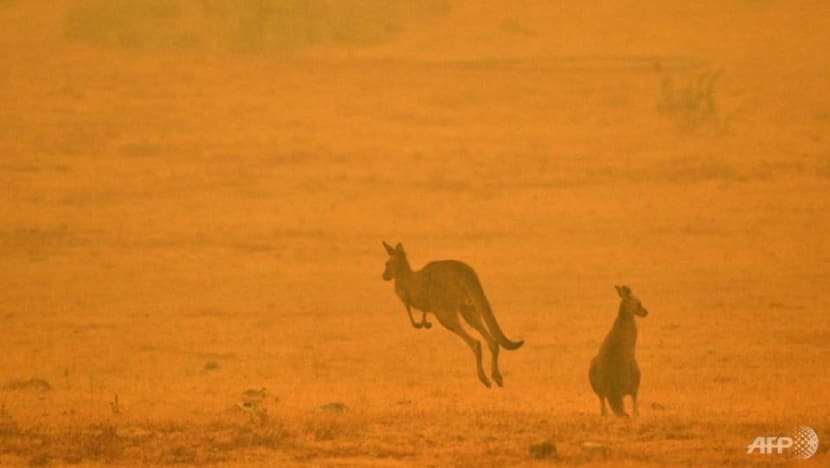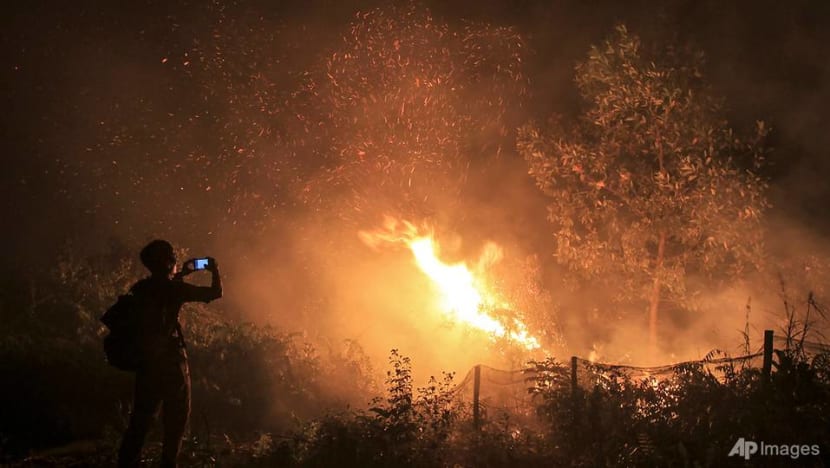Explainer: Why forests matter as carbon sinks and what we can do to protect them

FILE PHOTO: Smoke billows from a fire in an area of the Amazon rainforest near Porto Velho, Rondonia State, Brazil, September 10, 2019. REUTERS/Bruno Kelly
Natural land processes, such as photosynthesis, remove carbon dioxide from the atmosphere and store them in plants and soil.
These processes are estimated to absorb almost a third of human-generated carbon dioxide emissions.
However, as more forests are being converted into other land uses, their role in removing carbon dioxide has been severely affected.
A special report by the 2019 Intergovernmental Panel for Climate Change (IPCC) noted that agriculture, forestry and other land uses contribute about a quarter of global man-made Greenhouse Gas (GHG) emissions.
The IPCC report outlined how a reduction in GHG emissions can be achieved by avoiding land degradation, preserving natural habitats and restoring degraded lands.
Why do forests matter and what can Singapore do to protect them?
FORESTS AS CARBON SINKS
Forests play a vital role in regulating levels of carbon dioxide in our atmosphere. They can act as a carbon sink, where the uptake, or removal of carbon from the atmosphere, exceeds the amount of carbon released.
However, human activities such as deforestation, logging and fires have reduced forest areas and the capacity of forests to act as carbon sinks.

We witnessed scenes of fires devastating forests from 2019 into 2020 in the Amazon, Indonesia and Australia. These fires have largely been attributed to human causes, although weather variables such as long periods of drought exacerbated the conditions for fire.
Recent studies show worrying trends of how global warming could change our tropical forests from a storehouse of carbon to a source of carbon.
Tropical forests in the Amazon and Africa are losing their ability to take up carbon in the atmosphere as a result of higher temperatures and stronger drought conditions.
These environmental conditions are a symptom of global warming. They also slow plant growth and kill trees.
Long-term records in Borneo have demonstrated similar patterns of tree mortality after the 1997-1998 El Niño drought.
These records further revealed how fragmentation of forests into smaller areas caused them to release more carbon dioxide than they take up.
Peat swamp forests, which store a disproportionately large amount of carbon in soils, have also turned into a net source of carbon over the last few decades as a result of peat decomposition from drainage for agricultural activities.

READ: COVID-19 hampers Indonesia's fight against forest fires as haze season looms
HOW CAN WE PROTECT OUR FORESTS?
Solutions towards forest preservation include the protection of forest ecosystems in the form of protected areas, as well as developing forest policies to control deforestation, logging and fires.
For the long-term stability of forests, it is also important to have the global community reach net-zero emissions to stabilise the climate.
Crucially, we need to engage with the socio-political and economic drivers of deforestation and forest degradation.
In Southeast Asia, deforestation is driven largely by the production of commodities such as rubber, palm oil, wood fiber, coffee, and cacao, just to name a few.
Often the flow of these commodities is organised in a complex web of supply chains that link producing countries to distant consumer markets.
READ: Southeast Asia’s palm oil industry touts sustainability narrative, but activists cast doubts
The production of these commodities typically happen in the form of a plantation, which is a large expanse of land used for the planting of a single commercial species.
Plantation development can take place over forests or non-forests.
It is therefore crucial that companies involved in the production of commodities adhere to plantation development practices that avoid the clearance of forests, especially forests that hold large stores of carbon and biodiversity.
Consumer and retail companies can also be more involved by ensuring that ingredients found in their products are not derived from plantations that have caused deforestation.

Financiers and investors should consider how their investments are contributing to deforestation through commodity production.
There needs to be greater disclosure about how commodities are produced and where these commodities come from. This will help to determine whether the production of these commodities are potentially linked to deforestation.
An example of a platform for companies to make available such information is the Carbon Disclosure Project (CDP) for forests, which encourages companies to disclose how much deforestation may be embedded in their company’s supply chain.
Participation in such platforms is often voluntary and hence receive a low response rate.
For example, only one fifth of companies in Asia that were approached by CDP to disclose potential sources of deforestation responded in 2018.
READ: Widespread damage to Southeast Asia's peatlands confirmed in satellite study
WHAT CAN SINGAPORE DO?
Prime Minister Lee’s National Day Rally in 2019 set the stage for Singapore’s commitment towards combating climate change.
More recently the Singapore government announced new targets for cutting GHG emissions.
What we have heard less about is how Singapore could potentially contribute towards reducing GHG emissions from improved land use management.
Singapore’s own land use sector is currently a carbon source rather than a carbon sink.
This is because the conversion of forests and vegetated areas for housing releases carbon that is originally stored in the trees and soil to the atmosphere.
Singapore has plans for forest restoration around our nature reserves and, more recently, to plant one million trees by 2030 to create more gardens and nature parks.

These are all welcomed measures to increase the amount of green spaces for people and biodiversity.
In addition, Singapore plays an important role in supply chains as a country for processing, trading and financing the production of commodities.
There is a need to examine commodity supply chains in Singapore and consider ways in which we can ensure that these supply chains are free from deforestation.
Commodities trading in Singapore was worth USD 1.2 trillion in revenue by 2018.
Specifically, Singapore supports 20 per cent of the world’s trade in agricultural commodities, and this is expected to expand to 30 per cent by 2025, overtaking Switzerland’s lead in this sector.
To increase transparency and disclosure from companies, Singapore could provide incentives for companies to participate in reporting and disclosure of information related to deforestation in their supply chains, or suggest that such platforms or reporting frameworks (e.g., the Accountability Framework) be used by SGX-listed companies in their mandatory sustainability reports.

As a small country, we may think we can’t do much more to reduce GHG emissions through improved land use management.
But as a country which plays a major role in flows of agricultural commodities in Southeast Asia, where major agricultural commodity producers and traders are based, and where financiers and investors aggregate, Singapore has the potential to do more to improve forest protection in the region.
Janice Lee is an Assistant Professor at the Asian School of the Environment and a Principal Investigator in the Earth Observatory Singapore at Nanyang Technological University of Singapore (NTU).














